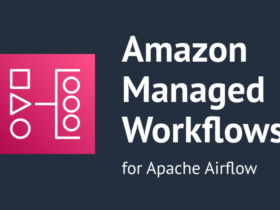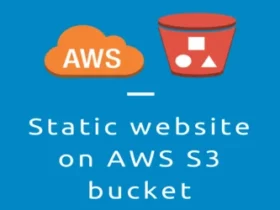Outbound VPC Proxy |
|
AWS Outbound Proxy with Domain WhiteListing13-12-2021Pawan Rai |
|
Why Filter Traffic?
when it comes to getting hacked, it’s not a matter of if but when. And to protect against that scenario, encrypting data at rest is a must. But, invariably one or more data sources is left unencrypted and that leaves an opening for your data to be compromised.
How to Filter Traffic?
In AWS We have a Limited ways to Manage Traffic and Filter unwanted URL access
We will discuss 3 methods for controlling outbound internet access in AWS VPCs:
- AWS Native Services – AWS NAT Gateway & AWS NAT Instances
- Proxies, such as Squid Proxy
- Third-party In-Line VPC NAT Gateways, such as Aviatrix Gateway
AWS Native Services
AWS provides NAT Instances and NAT Gateways to allow your private subnet instances to connect to the internet. It is recommended that you use the fully managed, highly available NAT gateway service instead of NAT instances.
When filtering outbound traffic using these native services you will need to rely on security groups and Network ACLs. One benefit to the NAT instance is that security groups can be associated directly with NAT instances but cannot be associated with the NAT gateway. If you use the NAT gateway and you would like to control outbound traffic using security groups, you must associate the EC2 instances behind the gateway with the security group.
Web Proxy(We are using this in our organization)
A web proxy is a standard approach that many administrators use to filter traffic.
With this technique, all traffic is routed through one or more NAT instances with a proxy engine like Squid installed. While you can route traffic to a proxy via modifications on the Operating System, we will only consider a central proxy managed through AWS route table here.
Steps: (Currently Testing)
- First We have to Create VPC That is able to Connect to the internet.
- We Template is able to Create the Proxy Server But which Servers is Going To use this Proxy Server is Need to be Config.
Config server on Which you want to use Proxy
- export http_proxy=http://<Proxy-DOMAIN>:<Proxy-Port>
- export https_proxy=$http_proxy
- Replace <Proxy-DOMAIN> with the domain of the load balancer, which you can find in the stack output parameter.
- Replace <Proxy-Port> with the port of your proxy, which is also listed in the stack output parameter.
Which I used for Config
- export http_proxy=http://OutboundProxyLoadBalancer-93f04e0f88bb450e.elb.us-east-1.amazonaws.com:3128 && export https_proxy=$http_proxy
How Resources are Connect with Each Other?

We can change the Allowed URL with Secret Manager

Template For the Outbound Proxy Server Creation
- Description: Outbound filtering proxy
- Parameters:
- WhitelistedDomains:
- Type: String
- Default: .amazonaws.com, .debian.org, twitter.com
- Description: Whitelisted domains comma separated
- CustomDNS:
- Type: String
- Default: default
- Description: Provide optional a DNS server for domain filtering, like OpenDNS (comma separated, like 8.8.8.8,8.8.8.7)
- KeyName:
- Type: “String”
- Description: Name of RSA key for EC2 access for testing only.
- Default: ‘luxmiVirginia’
- ProxyPort:
- Type: String
- Default: 3128
- Description: Port Proxy
- VpcId:
- Description: VPC ID Where the Proxy will be installed
- Type: “AWS::EC2::VPC::Id”
- PrivateSubnetIDs:
- Description: Private SubnetIDs where the Network LoadBalancer will be placed (Select min 2 max 3)
- Type: “List<AWS::EC2::Subnet::Id>”
- PublicSubnetIDs:
- Description: Public SubnetIDs where the proxy will be placed (Select min 2 max 3)
- Type: “List<AWS::EC2::Subnet::Id>”
- InstanceType:
- Description: WebServer EC2 instance type
- Type: String
- Default: t2.micro
- AllowedValues:
- – t2.micro
- – t3.nano
- – t3.micro
- – t3.small
- – t3.medium
- – t3.large
- – m3.medium
- – m3.large
- – m3.xlarge
- – m3.2xlarge
- – m4.large
- – m4.xlarge
- – m4.2xlarge
- – m5.large
- – m5.xlarge
- – m5.2xlarge
- – c3.large
- – c3.xlarge
- – c4.large
- ConstraintDescription: must be a valid EC2 instance type.
- NetworkAllowedCIDR:
- Description: CIDR allowed in Proxy Security Group. The allowed block size is between a /32 netmask and /8 netmask
- Type: String
- Default: 172.31.0.0/16
- AllowedPattern: ^[.0-9]*\/([89]|[12][0-9]|3[0-2])$
- LatestAmiId:
- Type: ‘AWS::SSM::Parameter::Value<AWS::EC2::Image::Id>’
- Default: ‘/aws/service/ami-amazon-linux-latest/amzn2-ami-hvm-x86_64-gp2’
- Description: AMI ID pointer in SSM. Default latest AMI Amazon Linux2.
- Metadata:
- ‘AWS::CloudFormation::Interface’:
- ParameterGroups:
- – Label:
- default: Proxy parameter
- Parameters:
- – WhitelistedDomains
- – CustomDNS
- – ProxyPort
- – InstanceType
- – LatestAmiId
- – KeyName
- – Label:
- default: Network parameter
- Parameters:
- – VpcId
- – PrivateSubnetIDs
- – PublicSubnetIDs
- – NetworkAllowedCIDR
- ParameterLabels:
- WhitelistedDomains:
- default: Allowed domains (whitelisted)
- CustomDNS:
- default: Custom DNS servers
- ProxyPort:
- default: Proxy Port
- InstanceType:
- default: Instance Type
- LatestAmiId:
- default: AMI ID
- KeyName:
- default: SSH Key name
- VpcId:
- default: VPC ID
- PrivateSubnetIDs:
- default: Private Subnet IDs
- PublicSubnetIDs:
- default: Public Subnet IDs
- NetworkAllowedCIDR:
- default: Allowed client CIRD
- Conditions:
- AddSSHKey: !Not
- – !Equals
- – ”
- – !Ref KeyName
- Resources:
- OutboundProxyRole:
- Type: AWS::IAM::Role
- Properties:
- RoleName: !Sub “Outbound-proxy-${AWS::StackName}”
- AssumeRolePolicyDocument:
- Version: ‘2012-10-17’
- Statement:
- – Effect: Allow
- Principal:
- Service:
- – ec2.amazonaws.com
- Action:
- – sts:AssumeRole
- Path: “/”
- Policies:
- – PolicyName: LogRolePolicy
- PolicyDocument:
- Version: ‘2012-10-17’
- Statement:
- – Effect: Allow
- Action:
- – logs:CreateLogGroup
- – logs:CreateLogStream
- – logs:PutLogEvents
- – logs:DescribeLogStreams
- Resource:
- – !GetAtt OutboundProxyLogGroup.Arn
- – PolicyName: AssociateEIP
- PolicyDocument:
- Version: ‘2012-10-17’
- Statement:
- – Effect: Allow
- Action:
- – ec2:AssociateAddress
- – ec2:Describe*
- Resource:
- – “*”
- – PolicyName: RevokeAuthorizeSG
- PolicyDocument:
- Version: ‘2012-10-17’
- Statement:
- – Effect: Allow
- Action:
- – ec2:RevokeSecurityGroupIngress
- – ec2:AuthorizeSecurityGroupIngress
- – ec2:Describe*
- Resource:
- – “*”
- – PolicyName: GetSecret
- PolicyDocument:
- Version: ‘2012-10-17’
- Statement:
- – Effect: Allow
- Action:
- – secretsmanager:GetSecretValue
- Resource:
- – !Ref WhitelistedSitesSecret
- – PolicyName: CloudWatchMetric
- PolicyDocument:
- Version: ‘2012-10-17’
- Statement:
- – Effect: Allow
- Action:
- – cloudwatch:PutMetricData
- Resource:
- – “*”
- WhitelistedSitesSecret:
- Type: ‘AWS::SecretsManager::Secret’
- Properties:
- Name: Proxy-Domains-Whitelisting
- Description: This secret contains the proxy whitelisted domains
- SecretString: !Ref WhitelistedDomains
- FixedEIPa:
- Type: AWS::EC2::EIP
- Properties:
- Domain: vpc
- FixedEIPb:
- Type: AWS::EC2::EIP
- Properties:
- Domain: vpc
- FixedEIPc:
- Type: AWS::EC2::EIP
- Properties:
- Domain: vpc
- FixedEIPd:
- Type: AWS::EC2::EIP
- Properties:
- Domain: vpc
- LoadBalancer:
- Type: AWS::ElasticLoadBalancingV2::LoadBalancer
- Properties:
- Scheme: internal
- Type: network
- Name: OutboundProxyLoadBalancer
- Subnets: !Ref PrivateSubnetIDs
- NetworkLoadBalancerTargetGroup:
- Type: AWS::ElasticLoadBalancingV2::TargetGroup
- Properties:
- Name: OutboundProxyTargetGroup
- Port: !Ref ProxyPort
- Protocol: TCP
- VpcId: !Ref VpcId
- TargetGroupAttributes:
- – Key: deregistration_delay.timeout_seconds
- Value: 60
- Tags:
- – Key: Name
- Value: SMARTProxyTargetGroup
- LoadBalancerListenerHTTPS:
- Type: AWS::ElasticLoadBalancingV2::Listener
- Properties:
- DefaultActions:
- – Type: forward
- TargetGroupArn: !Ref NetworkLoadBalancerTargetGroup
- LoadBalancerArn: !Ref LoadBalancer
- Port: !Ref ProxyPort
- Protocol: TCP
- OutboundProxyProfile:
- Type: AWS::IAM::InstanceProfile
- Properties:
- Path: “/”
- InstanceProfileName: !Sub “Proxy-EC2-${AWS::StackName}”
- Roles:
- – !Ref OutboundProxyRole
- OutboundProxySecurityGroup:
- Type: AWS::EC2::SecurityGroup
- Properties:
- GroupDescription: Allow access to Outbound Proxy
- VpcId: !Ref VpcId
- SecurityGroupIngress:
- – CidrIp: !Ref NetworkAllowedCIDR
- FromPort: !Ref ProxyPort
- ToPort: !Ref ProxyPort
- IpProtocol: tcp
- OutboundProxyASG:
- Type: AWS::AutoScaling::AutoScalingGroup
- Properties:
- VPCZoneIdentifier: !Ref PublicSubnetIDs
- Cooldown: 120
- LaunchConfigurationName: !Ref OutboundProxyLaunchConfig
- MaxSize: 3
- MinSize: 1
- TargetGroupARNs:
- – Ref: “NetworkLoadBalancerTargetGroup”
- TerminationPolicies:
- – OldestInstance
- Tags:
- – Key: Name
- PropagateAtLaunch: ‘true’
- Value: outbound-proxy
- – Key: AppVersion
- PropagateAtLaunch: ‘true’
- Value: 1.0.0
- – Key: ApplicationID
- PropagateAtLaunch: ‘true’
- Value: outbound-proxy
- CreationPolicy:
- ResourceSignal:
- Timeout: PT15M
- Count: ‘1’
- UpdatePolicy:
- AutoScalingScheduledAction:
- IgnoreUnmodifiedGroupSizeProperties: true
- AutoScalingRollingUpdate:
- MinInstancesInService: 1
- MaxBatchSize: 1
- PauseTime: PT15M
- WaitOnResourceSignals: ‘true’
- SuspendProcesses:
- – ScheduledActions
- ScaleOutPolicy:
- Type: AWS::AutoScaling::ScalingPolicy
- Properties:
- AdjustmentType: ChangeInCapacity
- AutoScalingGroupName:
- Ref: OutboundProxyASG
- Cooldown: ’90’
- ScalingAdjustment: ‘1’
- CPUAlarmHigh:
- Type: AWS::CloudWatch::Alarm
- Properties:
- EvaluationPeriods: ‘1’
- Statistic: Average
- Threshold: ’80’
- AlarmDescription: Alarm if CPU too high (50%) or metric disappears indicating instance
- is down
- Period: ’60’
- AlarmActions:
- – Ref: ScaleOutPolicy
- Namespace: AWS/EC2
- Dimensions:
- – Name: AutoScalingGroupName
- Value:
- Ref: OutboundProxyASG
- ComparisonOperator: GreaterThanThreshold
- MetricName: CPUUtilization
- ScaleInPolicy:
- Type: AWS::AutoScaling::ScalingPolicy
- Properties:
- AdjustmentType: ChangeInCapacity
- AutoScalingGroupName:
- Ref: OutboundProxyASG
- Cooldown: ’90’
- ScalingAdjustment: ‘-1’
- CPUAlarmLow:
- Type: AWS::CloudWatch::Alarm
- Properties:
- EvaluationPeriods: ‘1’
- Statistic: Average
- Threshold: ’10’
- AlarmDescription: Alarm if CPU low (10%) or metric disappears indicating instance
- is down
- Period: ’60’
- AlarmActions:
- – Ref: ScaleInPolicy
- Namespace: AWS/EC2
- Dimensions:
- – Name: AutoScalingGroupName
- Value:
- Ref: OutboundProxyASG
- ComparisonOperator: LessThanThreshold
- MetricName: CPUUtilization
- OutboundProxyLaunchConfig:
- Type: AWS::AutoScaling::LaunchConfiguration
- Metadata:
- Comment: Configures Outbound Proxy
- AWS::CloudFormation::Init:
- config:
- files:
- “/root/update-dns.sh”:
- content: !Sub |
- # DNS List comma delimited
- dns_list=”${CustomDNS}”
- #
- # check if default
- if [[ $dns_list == “default” ]]; then
- exit
- fi
- #
- # split to list
- array=(${!dns_list//,/ })
- int_list=`ls /etc/sysconfig/network-scripts/ifcfg-* | grep -v “\-lo$\|old$”`
- # for all interfaces except lookback
- for int in ${!int_list[@]}
- do
- # remove spaces
- $int=${!int//[[:blank:]]/}
- echo “working on $int”
- # make tmp file without DNS settings
- grep -ve “PEERDNS=\|DNS.=” $int > ./tmp.int.conf
- grep -v “nameserver” /etc/resolv.conf > ./tmp.resolv.conf
- echo “PEERDNS=yes” >> ./tmp.int.conf
- counter=1
- for i in ${!array[@]}
- do
- echo “DNS${!counter}=${!i}” >> ./tmp.int.conf
- echo “nameserver ${!i}” >> ./tmp.resolv.conf
- ((counter++))
- done
- # update the interface config
- mv $int ${!int}.old
- cp ./tmp.int.conf $int
- done
- # update the resolv.conf
- mv /etc/resolv.conf /etc/resolv.conf.old
- cp ./tmp.resolv.conf /etc/resolv.conf
- # clear squid cache if squid is running. Relevant for dns content filtering
- # systemctl status squid && systemctl stop squid && rm -rf /var/spool/squid/ && squid -z && systemctl start squid
- echo “done”
- mode: ‘000755’
- owner: “root”
- group: “root”
- “/etc/awslogs/awscli.conf”:
- content: !Sub |
- [plugins]
- cwlogs = cwlogs
- [default]
- region = ${AWS::Region}
- mode: ‘000755’
- owner: “root”
- group: “root”
- “/root/fetch-config-cron.sh”:
- content: !Sub |
- aws secretsmanager get-secret-value –secret-id ${WhitelistedSitesSecret} –region ${AWS::Region} > ~/.tmp.hosts
- upstreamVersion=$(grep VersionId ~/.tmp.hosts)
- hostVersion=$(cat ~/configVersion) || hostVersion=”0″
- # update if config
- if [[ $upstreamVersion != $hostVersion ]]; then
- mv /etc/squid/squid.allowed.sites.txt /etc/squid/squid.allowed.sites.txt.old
- grep SecretString ~/.tmp.hosts | sed ‘s/^.*SecretString\”: \”\(.*\)\”\,/\1/’ | tr -d ” ” | tr “,” “\n” > /etc/squid/squid.allowed.sites.txt
- grep VersionId ~/.tmp.hosts > ~/configVersion
- systemctl restart squid
- echo “Squid config updated”
- logger “Squid config updated by cron-job from AWS secret store ${WhitelistedSitesSecret}”
- fi
- mode: ‘000755’
- owner: “root”
- group: “root”
- “/root/get-stats-cron.sh”:
- content: !Sub |
- #!/bin/bash
- #
- # Copyright 2018 Amazon.com, Inc. or its affiliates. All Rights Reserved.
- # SPDX-License-Identifier: MIT-0#
- #
- # gets statistics from squid proxy and pushes them to CloudWatch
- #
- ###
- region=`curl –silent http://169.254.169.254/latest/dynamic/instance-identity/document | grep region | cut -f 4 -d ‘”‘`
- instanceId=`curl –silent http://169.254.169.254/latest/meta-data/instance-id`
- squidclient -h localhost cache_object://localhost/ mgr:5min | grep “client_http.request\|client_http.hits\|client_http.errors\|client_http.kbytes_in\|client_http.kbytes_out\|server.all.” | while read line ; do
- name=`echo $line | cut -d “=” -f 1`
- value=`echo $line | cut -d “=” -f 2 | sed “s/[^0-9\.]*//g” `
- aws cloudwatch put-metric-data –metric-name “$name” –namespace Proxy –dimensions InstanceID=”$instanceId” –value “$value” –region $region
- done
- mode: ‘000755’
- owner: “root”
- group: “root”
- “/etc/squid/squid.allowed.sites.txt”:
- content: |
- .amazon.com
- mode: ‘000400’
- owner: “root”
- group: “root”
- “/etc/squid/squid.conf”:
- content: !Sub |
- # Recommended minimum configuration:
- #
- # Example rule allowing access from your local networks.
- # Adapt to list your (internal) IP networks from where browsing
- # should be allowed
- acl localnet src 10.0.0.0/8 # RFC1918 possible internal network
- acl localnet src 172.16.0.0/12 # RFC1918 possible internal network
- acl localnet src 192.168.0.0/16 # RFC1918 possible internal network
- acl localnet src fc00::/7 # RFC 4193 local private network range
- acl localnet src fe80::/10 # RFC 4291 link-local (directly plugged) machines
- acl localnet src 127.0.0.1
- # The Instance Metadata Service
- # (https://docs.aws.amazon.com/AWSEC2/latest/UserGuide/instancedata-data-retrieval.html#instance-metadata-limiting-access)
- acl imds dst 169.254.169.254
- acl SSL_ports port 443
- acl Safe_ports port 80 # http
- acl Safe_ports port 21 # ftp
- acl Safe_ports port 443 # https
- acl Safe_ports port 70 # gopher
- acl Safe_ports port 210 # wais
- acl Safe_ports port 1025-65535 # unregistered ports
- acl Safe_ports port 280 # http-mgmt
- acl Safe_ports port 488 # gss-http
- acl Safe_ports port 591 # filemaker
- acl Safe_ports port 777 # multiling http
- acl CONNECT method CONNECT
- #
- # Recommended minimum Access Permission configuration:
- #
- # Deny requests to the Instance Metadata Service
- http_access deny imds
- # Deny requests to certain unsafe ports
- http_access deny !Safe_ports
- # Deny CONNECT to other than secure SSL ports
- http_access deny CONNECT !SSL_ports
- # Only allow cachemgr access from localhost
- http_access allow localhost manager
- http_access deny manager
- # Deny requests to services running on localhost
- http_access deny to_localhost
- #
- # INSERT YOUR OWN RULE(S) HERE TO ALLOW ACCESS FROM YOUR CLIENTS
- #
- # Example rule allowing access from your local networks.
- # Adapt localnet in the ACL section to list your (internal) IP networks
- # from where browsing should be allowed
- acl allowed_http_sites dstdomain “/etc/squid/squid.allowed.sites.txt”
- http_access allow allowed_http_sites
- #http_access allow localnet
- #http_access allow localhost
- # And finally deny all other access to this proxy
- http_access deny all
- # Squid normally listens to port 3128, but needs to be parametrized here
- http_port 0.0.0.0:${ProxyPort} ssl-bump cert=/etc/squid/cert.pem
- acl allowed_https_sites ssl::server_name “/etc/squid/squid.allowed.sites.txt”
- acl step1 at_step SslBump1
- acl step2 at_step SslBump2
- acl step3 at_step SslBump3
- ssl_bump peek step1 all
- ssl_bump peek step2 allowed_https_sites
- ssl_bump splice step3 allowed_https_sites
- ssl_bump terminate step2 all
- # Uncomment and adjust the following to add a disk cache directory.
- #cache_dir ufs /var/spool/squid 100 16 256
- # Leave coredumps in the first cache dir
- coredump_dir /var/spool/squid
- #
- # Add any of your own refresh_pattern entries above these.
- #
- refresh_pattern ^ftp: 1440 20% 10080
- refresh_pattern ^gopher: 1440 0% 1440
- refresh_pattern -i (/cgi-bin/|\?) 0 0% 0
- refresh_pattern . 0 20% 4320
- “/etc/awslogs/awslogs.conf”:
- content: !Sub |
- [general]
- state_file = /var/lib/awslogs/agent-state
- [/var/log/squid/access.log]
- file = /var/log/squid/access.log
- log_group_name = ${OutboundProxyLogGroup}
- log_stream_name = {instance_id}/squid_access.log
- #datetime_format = %d/%b/%Y:%H:%M:%S
- mode: ‘000400’
- owner: “root”
- group: “root”
- “/etc/cfn/cfn-hup.conf”:
- content: !Sub |
- [main]
- stack= ${AWS::StackId}
- region=${AWS::Region}
- interval=5
- mode: “000400”
- owner: “root”
- group: “root”
- “/etc/cfn/hooks.d/cfn-auto-reloader.conf”:
- content: !Sub |
- [cfn-auto-reloader-hook]
- triggers=post.update
- path=Resources.OutboundProxyLaunchConfig.Metadata.AWS::CloudFormation::Init
- action=/opt/aws/bin/cfn-init -v –stack ${AWS::StackName} –resource OutboundProxyLaunchConfig –region ${AWS::Region}
- runas=root
- mode: “000400”
- owner: “root”
- group: “root”
- Properties:
- AssociatePublicIpAddress: True
- ImageId: !Ref LatestAmiId
- InstanceType: !Ref InstanceType
- KeyName: !If
- – AddSSHKey
- – !Ref KeyName
- – !Ref “AWS::NoValue”
- SecurityGroups:
- – !Ref OutboundProxySecurityGroup
- IamInstanceProfile:
- Ref: OutboundProxyProfile
- UserData:
- Fn::Base64: !Sub |
- #!/bin/bash -xe
- yum -y install python-pip
- yum -y install python-setuptools
- yum install -y awscli
- # install squid
- yum install -y squid
- # install the CloudWatch Logs agent
- yum install -y awslogs
- # Get the latest CloudFormation package
- easy_install https://s3.amazonaws.com/cloudformation-examples/aws-cfn-bootstrap-latest.tar.gz
- # Start cfn-init
- /opt/aws/bin/cfn-init -s ${AWS::StackId} -r OutboundProxyLaunchConfig –region ${AWS::Region} || error_exit ‘Failed to run cfn-init’
- # Start up the cfn-hup daemon to listen for changes to the launch configuration metadata
- /opt/aws/bin/cfn-hup || error_exit ‘Failed to start cfn-hup’
- # start the cloud watch agent
- systemctl start awslogsd
- # get the IP allocation id
- EIPs=(${FixedEIPa.AllocationId} ${FixedEIPb.AllocationId} ${FixedEIPc.AllocationId} ${FixedEIPd.AllocationId})
- for i in ${!EIPs[@]}; do
- out=$(aws ec2 describe-addresses –region ${AWS::Region} –allocation-ids $i)
- if [[ $out != *AssociationId* ]]; then
- freeEIP=$i
- break
- fi
- done
- # bind the address
- echo “binding EIP”
- aws ec2 associate-address –region ${AWS::Region} –instance-id $(curl -s http://169.254.169.254/latest/meta-data/instance-id) –allocation-id $freeEIP –allow-reassociation || error_exit ‘Failed to Associate Elastic IP’
- # generate dummy certificate
- openssl req -x509 -newkey rsa:4096 -keyout /etc/squid/cert.pem -out /etc/squid/cert.pem -days 3650 -subj “/C=XX/ST=XX/L=squid/O=squid/CN=squid” -nodes
- # get the whitelisted domain
- /root/fetch-config-cron.sh
- # start squit
- systemctl start squid
- # cron to update whitelist if needed every 5 min
- echo “*/5 * * * * /root/fetch-config-cron.sh” | crontab –
- # cron to to get and push proxy stats
- (crontab -l ; echo “*/5 * * * * /root/get-stats-cron.sh”) | crontab –
- # set up DNS if needed
- if [[ ${CustomDNS} != “default” ]]; then
- /root/update-dns.sh
- fi
- # All done so signal success
- /opt/aws/bin/cfn-signal -e $? –stack ${AWS::StackId} –resource OutboundProxyASG –region ${AWS::Region}
- echo “User data done”
- OutboundProxyLogGroup:
- Type: AWS::Logs::LogGroup
- Properties:
- RetentionInDays: 30
- LogGroupName: !Sub “Proxy-${AWS::StackName}”
- Outputs:
- CloudWatchLogGroupName:
- Description: The name of the CloudWatch log group for outbound proxy
- Value: !Ref OutboundProxyLogGroup
- Export:
- Name: Proxy-CloudWatchLogGroupName
- OutboundProxyDomain:
- Description: Proxy DNS name to be used in the clients
- Value: !GetAtt LoadBalancer.DNSName
- Export:
- Name: Proxy-Domain
- OutboundProxyPort:
- Description: Port of the Proxy
- Value: !Ref ProxyPort
- Export:
- Name: Proxy-Port
- EgressIP1:
- Description: Outbound Proxy source IP (first)
- Value: !Ref FixedEIPa
- Export:
- Name: Proxy-Egress-IP-1
- EgressIP2:
- Description: Outbound Proxy source IP (second)
- Value: !Ref FixedEIPb
- Export:
- Name: Proxy-Egress-IP-2
- EgressIP3:
- Description: Outbound Proxy source IP (third)
- Value: !Ref FixedEIPc
- Export:
- Name: Proxy-Egress-IP-3
- EgressIP4:
- Description: Outbound Proxy source IP (fourth)
- Value: !Ref FixedEIPd
- Export:
- Name: Proxy-Egress-IP-4
- SecurityGroupProxy:
- Description: Proxy security group
- Value: SecurityGroup_Proxy
- Export:
- Name: Proxy-SecurityGroup
- LinuxProxySettings:
- Description: Linux proxy settings. Copy and paste to your shell to set the proxy
- Value: !Sub “export http_proxy=http://${LoadBalancer.DNSName}:${ProxyPort} && export https_proxy=$http_proxy”
- Export:
- Name: LinuxProxySettings
VPC Template Which Work With outbound Proxy
- AWSTemplateFormatVersion: ‘2010-09-09’
- Description: Create VPC for proxy demo
- Parameters:
- VPCCidrBlock:
- Type: String
- Description: CIDR block for VPC to deploy. (X.X.X.X/X)
- AllowedPattern: ^(([0-9]|[1-9][0-9]|1[0-9]{2}|2[0-4][0-9]|25[0-5])\.){3}([0-9]|[1-9][0-9]|1[0-9]{2}|2[0-4][0-9]|25[0-5])(/([0-9]|[1-2][0-9]|3[0-2]))$
- Default: 10.0.0.0/16
- PublicSubnetCIDR1:
- Type: String
- Description: First public subnet CIDR
- AllowedPattern: ^(([0-9]|[1-9][0-9]|1[0-9]{2}|2[0-4][0-9]|25[0-5])\.){3}([0-9]|[1-9][0-9]|1[0-9]{2}|2[0-4][0-9]|25[0-5])(/([0-9]|[1-2][0-9]|3[0-2]))$
- Default: 10.0.0.0/24
- PublicSubnetCIDR2:
- Type: String
- Description: Second public subnet CIDR
- AllowedPattern: ^(([0-9]|[1-9][0-9]|1[0-9]{2}|2[0-4][0-9]|25[0-5])\.){3}([0-9]|[1-9][0-9]|1[0-9]{2}|2[0-4][0-9]|25[0-5])(/([0-9]|[1-2][0-9]|3[0-2]))$
- Default: 10.0.1.0/24
- PublicSubnetCIDR3:
- Type: String
- Description: Third public subnet CIDR
- AllowedPattern: ^(([0-9]|[1-9][0-9]|1[0-9]{2}|2[0-4][0-9]|25[0-5])\.){3}([0-9]|[1-9][0-9]|1[0-9]{2}|2[0-4][0-9]|25[0-5])(/([0-9]|[1-2][0-9]|3[0-2]))$
- Default: 10.0.2.0/24
- PrivateSubnetCIDR1:
- Type: String
- Description: First private subnet CIDR
- AllowedPattern: ^(([0-9]|[1-9][0-9]|1[0-9]{2}|2[0-4][0-9]|25[0-5])\.){3}([0-9]|[1-9][0-9]|1[0-9]{2}|2[0-4][0-9]|25[0-5])(/([0-9]|[1-2][0-9]|3[0-2]))$
- Default: 10.0.3.0/24
- PrivateSubnetCIDR2:
- Type: String
- Description: Second private subnet CIDR
- AllowedPattern: ^(([0-9]|[1-9][0-9]|1[0-9]{2}|2[0-4][0-9]|25[0-5])\.){3}([0-9]|[1-9][0-9]|1[0-9]{2}|2[0-4][0-9]|25[0-5])(/([0-9]|[1-2][0-9]|3[0-2]))$
- Default: 10.0.4.0/24
- PrivateSubnetCIDR3:
- Type: String
- Description: Thirs private subnet CIDR
- AllowedPattern: ^(([0-9]|[1-9][0-9]|1[0-9]{2}|2[0-4][0-9]|25[0-5])\.){3}([0-9]|[1-9][0-9]|1[0-9]{2}|2[0-4][0-9]|25[0-5])(/([0-9]|[1-2][0-9]|3[0-2]))$
- Default: 10.0.5.0/24
- Resources:
- VPC:
- Type: AWS::EC2::VPC
- Properties:
- CidrBlock: !Ref ‘VPCCidrBlock’
- EnableDnsSupport: ‘true’
- EnableDnsHostnames: ‘true’
- InstanceTenancy: default
- Tags:
- – Key: Name
- Value: !Sub vpc-${AWS::StackName}
- InternetGateway:
- Type: AWS::EC2::InternetGateway
- Properties:
- Tags:
- – Key: Name
- Value: Internet Gateway
- InternetGatewayAttachment:
- Type: AWS::EC2::VPCGatewayAttachment
- Properties:
- InternetGatewayId: !Ref ‘InternetGateway’
- VpcId: !Ref ‘VPC’
- PublicSubnet1:
- Type: AWS::EC2::Subnet
- Properties:
- CidrBlock: !Ref ‘PublicSubnetCIDR1’
- AvailabilityZone: !Select
- – ‘0’
- – !GetAZs ”
- MapPublicIpOnLaunch: ‘false’
- Tags:
- – Key: Name
- Value: Public subnet 1
- VpcId: !Ref ‘VPC’
- PublicSubnet2:
- Type: AWS::EC2::Subnet
- Properties:
- CidrBlock: !Ref ‘PublicSubnetCIDR2’
- AvailabilityZone: !Select
- – ‘1’
- – !GetAZs ”
- MapPublicIpOnLaunch: ‘false’
- Tags:
- – Key: Name
- Value: Public subnet 2
- VpcId: !Ref ‘VPC’
- PublicSubnet3:
- Type: AWS::EC2::Subnet
- Properties:
- CidrBlock: !Ref ‘PublicSubnetCIDR3’
- AvailabilityZone: !Select
- – ‘2’
- – !GetAZs ”
- MapPublicIpOnLaunch: ‘false’
- Tags:
- – Key: Name
- Value: Pubic subnet 3
- VpcId: !Ref ‘VPC’
- PublicRouteTable:
- Type: AWS::EC2::RouteTable
- Properties:
- VpcId: !Ref ‘VPC’
- Tags:
- – Key: Name
- Value: Public Route Table
- AttachPublicSubnet1RouteTable:
- Type: AWS::EC2::SubnetRouteTableAssociation
- Properties:
- RouteTableId: !Ref ‘PublicRouteTable’
- SubnetId: !Ref ‘PublicSubnet1’
- AttachPublicSubnet2RouteTable:
- Type: AWS::EC2::SubnetRouteTableAssociation
- Properties:
- RouteTableId: !Ref ‘PublicRouteTable’
- SubnetId: !Ref ‘PublicSubnet2’
- AttachPublicSubnet3RouteTable:
- Type: AWS::EC2::SubnetRouteTableAssociation
- Properties:
- RouteTableId: !Ref ‘PublicRouteTable’
- SubnetId: !Ref ‘PublicSubnet3’
- PublicRoutetoInternet:
- Type: AWS::EC2::Route
- Properties:
- DestinationCidrBlock: ‘0.0.0.0/0’
- GatewayId: !Ref ‘InternetGateway’
- RouteTableId: !Ref ‘PublicRouteTable’
- PrivateSubnet1:
- Type: AWS::EC2::Subnet
- Properties:
- CidrBlock: !Ref ‘PrivateSubnetCIDR1’
- AvailabilityZone: !Select
- – ‘0’
- – !GetAZs ”
- MapPublicIpOnLaunch: ‘false’
- Tags:
- – Key: Name
- Value: Private Subnet 1
- VpcId: !Ref ‘VPC’
- PrivateSubnet2:
- Type: AWS::EC2::Subnet
- Properties:
- CidrBlock: !Ref ‘PrivateSubnetCIDR2’
- AvailabilityZone: !Select
- – ‘1’
- – !GetAZs ”
- MapPublicIpOnLaunch: ‘false’
- Tags:
- – Key: Name
- Value: Private Subnet 2
- VpcId: !Ref ‘VPC’
- PrivateSubnet3:
- Type: AWS::EC2::Subnet
- Properties:
- CidrBlock: !Ref ‘PrivateSubnetCIDR3’
- AvailabilityZone: !Select
- – ‘2’
- – !GetAZs ”
- MapPublicIpOnLaunch: ‘false’
- Tags:
- – Key: Name
- Value: Private Subnet 3
- VpcId: !Ref ‘VPC’
- PrivateRouteTable1:
- Type: AWS::EC2::RouteTable
- Properties:
- VpcId: !Ref ‘VPC’
- Tags:
- – Key: Name
- Value: Private Route Table 1
- AttachPrivateSubnet1RouteTable1:
- Type: AWS::EC2::SubnetRouteTableAssociation
- Properties:
- RouteTableId: !Ref ‘PrivateRouteTable1’
- SubnetId: !Ref ‘PrivateSubnet1’
- AttachPrivateSubnet2RouteTable1:
- Type: AWS::EC2::SubnetRouteTableAssociation
- Properties:
- RouteTableId: !Ref ‘PrivateRouteTable1’
- SubnetId: !Ref ‘PrivateSubnet2’
- AttachPrivateSubnet3RouteTable1:
- Type: AWS::EC2::SubnetRouteTableAssociation
- Properties:
- RouteTableId: !Ref ‘PrivateRouteTable1’
- SubnetId: !Ref ‘PrivateSubnet3’
- PublicRoutetoInternet:
- Type: AWS::EC2::Route
- Properties:
- DestinationCidrBlock: ‘0.0.0.0/0’
- GatewayId: !Ref ‘InternetGateway’
- RouteTableId: !Ref ‘PrivateRouteTable1’
- Outputs:
- VPCID:
- Description: VPC ID
- Value: !Ref ‘VPC’
- Export:
- Name: !Sub ‘VPC’
- VPCCidrBlock:
- Description: VPC Cidr Block
- Value: !Ref ‘VPCCidrBlock’
- Export:
- Name: !Sub ‘${AWS::StackName}-VPCCidrBlock’
- PublicSubnet1:
- Description: Public Subnet 1
- Value: !Ref ‘PublicSubnet1’
- Export:
- Name: !Sub ‘${AWS::StackName}-public-subnet-1’
- PublicSubnet2:
- Description: Public Subnet 2
- Value: !Ref ‘PublicSubnet2’
- Export:
- Name: !Sub ‘${AWS::StackName}-public-subnet-2’
- PublicSubnet3:
- Description: Public Subnet 3
- Value: !Ref ‘PublicSubnet3’
- Export:
- Name: !Sub ‘${AWS::StackName}-public-subnet-3’
- PrivateSubnet1:
- Description: Private Subnet 1
- Value: !Ref ‘PrivateSubnet1’
- Export:
- Name: !Sub ‘${AWS::StackName}-private-subnet-1’
- PrivateSubnet2:
- Description: Private Subnet 2
- Value: !Ref ‘PrivateSubnet2’
- Export:
- Name: !Sub ‘${AWS::StackName}-private-subnet-2’
- PrivateSubnet3:
- Description: Private Subnet 3
- Value: !Ref ‘PrivateSubnet3’
- Export:
- Name: !Sub ‘${AWS::StackName}-private-subnet-3’










Leave a Reply